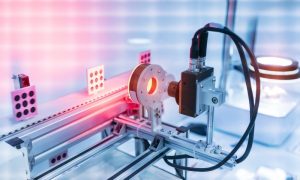In our last installment on display testing, we reviewed its role in AR/VR technology. It was only a mere glimpse into the evolution of and potential this testing method holds. We invite you to explore this topic in more depth by uncovering how near-eye display (NED) testing replicates human vision and why. We’ll also examine some of the specific measurement criteria and unique challenges accompanying this testing.
The Testing Measurement Criterion
Before we delve into how near-eye display testing replicates the human eye and why it does so, it’s essential to remember that this method is particular to AR/VR devices. For this reason, the testers themselves have to meet specific criteria for their measurements to be deemed accurate and usable.
Near-eye display testing aims to mimic the human visual experience as closely as possible. So it should come as no surprise that obtaining accurate results demands unique characterization and subsequent analysis. Among the most crucial attributes that inspectors need to measure are:
- Image sharpness
- Image clarity
- Image distortion
Measuring image distortion in viewing goggles is particularly important, as it helps to improve spatial image accuracy and projection alignment in the user experience. In any case, accurately characterizing these things allows testers their first glimpse into what changes might need to be made to the AR/VR goggles or headsets.
That said, the technology surrounding near-eye display testing is still relatively new and evolving. This means that there are still many challenges to overcome and tweaks to be made.
Generally speaking, experts in the field agree that improving this testing method entails an approach that incorporates software algorithms, new optical geometries, and new methodologies.
The Challenges of Near-Eye Display Testing
Creating a measurement system that mimics the sophisticated optics of a human eye doesn’t come without its challenges. After all, NEDs share specific attributes that make them particularly difficult to measure. To illustrate, AR/VR headset displays allow users to view objects either incredibly close up or across a wide field of view. Measuring the necessary characteristics in each level of vision is challenging enough.
But testers also have to worry about potential display defects like nonuniformity in brightness and a host of other eye-to-eye inconsistencies that the up-close nature of these displays might magnify. Through these challenges, testers have found that each eye in a headset must have an increased density of display pixels. These displays reduce inconsistencies and create a more immersive experience.
However, these pixel-dense displays require high-resolution measurement devices of their own to achieve precise testing. Adding all these things together equals a challenging road to capturing and measuring these displays fully with more traditional testing systems. But that doesn’t mean progress isn’t being made.
Near-Eye Testing Evolves to Replicate Human Vision
Near-eye display testing is still evolving, and indeed there are improvements to be made. However, AR/VR display manufacturers understand what new measurement systems and testing methods require to achieve the best results. They’re using innovative approaches to ensure that near-eye displays are crystal-clear and free of distracting defects and inconsistencies.
Moreover, experts in this field are experimenting with characteristic testing across multiple mediums, new optic geometries, and software algorithms to improve testing accuracy and data collection. Essentially, near-eye display testers are steadily modifying their measurement criterion to mimic the human visual experience as closely as possible. This means we get to continue enjoying the realistic, high-resolution experiences that AR/VR technology has introduced us to.





